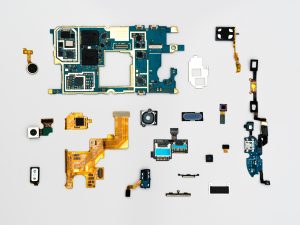Prototypes help designers and developers build partial product implementations, which potential end-users or customers use to provide feedback to the development team before full-scale development begins (Kan, 2003).
Prototyping and volume manufacturing is a necessary step in the product development process. It is a section of a more thorough process for designing advanced products and services. This is done to acknowledge and remove any type of bugs and user issues present in the product. The generic process of prototyping involves the stages of prototyping, pre-production engineering, design upgrade, and design verification. Once the prototype is designed, next step is the manufacturing process. After the stage of design verification, development stage begins which is further processed for testing and packaging of the product.

Prototyping Typical Cycle
-
Prototyping
-
Pre-production Engineering
-
Design Upgrade
-
Design Verification
-
Manufacturing Process Development
-
Testing
-
Packing
Avench's Approach
Avench’s approach towards the process of prototyping and manufacturing has a significant difference from the generic process. It begins with ideation of the project, which comprises of discussing the concept of the product, basic market research and identifying the target market. Then, we process to a primary architecture involving breadboard prototyping/POC and form exploration. Next, we start with prototyping, where we develop five prototypes, on which industrial design, hardware design, software design and testing is conducted.

Post the prototyping phase, the product undergoes process of design for manufacturing (DFM). This step involves the development of custom parts, contacting the suppliers, design review by the suppliers, co-ordinate with the supply chain experts for COTS components and generation of updated schematic and Gerber files. Then, the product validation testing is conducted, which are, Engineering Verification Testing (EVT), Design Verification Testing (DVT), and Product Verification Testing (PVT).
EVT includes:
- Field Testing
- Generation of the prototype issue list
- Review gate for production
DVT includes:
- Product assembly
- Identify DFM issues
- Process development for mass manufacturing
- Engineering change order request (if applicable)
- Development of test equipment and calibration software
- Regulatory testing and certification
- Review gate for readiness
PVT includes:
- Final manufacturing process
- Final review for Mass production
After the three different verification testing, the product is subjected to mass production stage which consists of the discovery of low incidence defects, stabilization of manufacturing process, deployment support, and maintenance and support. Next, the quality of the product is ensured by the Quality Assurance team, followed by testing, packaging and shipping of the product.
Our detailed process for prototyping and manufacturing has helped the clients get the desired result and successful product delivery within the set timeline of the project completion.
Post this, we do volume manufacturing also.
Avench Prototyping and Mass Manufacturing Process
Ideation
Product concept Basic market research Identifying the target market
Early Architecture
Breadboard prototyping/POC Form exploration
Prototyping
Develop 5 prototypes Industrial design Hardware design Software design Testing
Design for Manufacturing (DFM)
Develop custom parts Contact suppliers Design review by suppliers Work with supply chain experts for COTS components Generation of updated Schematic and Gerber files
Engineering verification test (EVT)
Field testing Generation of the prototype issue list Review gate for production
Design Verification Test (DVT)
Product assembly Identify DFM issues Process development for mass manufacturing Engineering change order request (if applicable) Development of test equipment and calibration software Regulatory testing and certification Review gate for readiness
Process Verification Test (PVT)
Final manufacturing process Final review for Mass production
Mass production
Discovery of low incidence defects Stabilization of the manufacturing process Deployment support Maintenance and support
Quality Assurance
Testing
Packaging
Shipping
What makes us different?
Well defined process
Experienced QA Team
Faster Delivery Time
Skilled Technical Team


